Introducing to Function as a Service (FaaS)
You’ve probably heard of SaaS, PaaS, and IaaS, but have you ever heard of Function as a Service (FaaS)?
The FaaS market is rapidly expanding. In 2018, the market was worth $3.01 billion, according to Allied Market Research. This figure is predicted to rise to $24 billion by 2026, implying a Compound Annual Growth Rate (CAGR) of 29.7% from 2020 to 2026.
What is Function as a Service (FaaS)?
FaaS (Function as a Service) is a type of cloud computing that makes it easier for developers to work by eliminating the need for them to manage application infrastructure. When developers utilize FaaS, they build, run, and oversee application packages using a FaaS platform.
You could be thinking that FaaS sounds like serverless computing at this point, and you’d be right. Developers can outsource the management of databases, API gateways, storage, communications, and other infrastructure to a third-party service using serverless computing. Serverless computing is referred to as FaaS.
Even if this is the first time you’ve heard of FaaS, you’ve almost certainly come across it in the wild. FaaS is used by many famous programs and apps, including Amazon’s Alexa.
If you’re familiar with Alexa, you’re aware that “skills” can be used to extend Alexa’s capabilities. Skills, like apps, allow Alexa to accomplish things beyond its default settings. Checking for notifications in your app, opening a new chat, or playing custom audio are just a few examples.
AWS Lambda is where Amazon runs all of Alexa’s capabilities. When you develop a new skill, you create it as a function, which you then deploy using AWS Lambda. The function is then performed by AWS Lambda, which also takes care of infrastructure issues like security and database management.
So, how does FaaS work step-by-step? Let’s cover that next.
How Does FaaS Work?
You must be familiar with two fundamental terms in order to comprehend FaaS:
- “Monolithic architecture” refers to a self-contained application that runs without the help of other programs. The user interface, business functions, and data interface are all managed in-house by these apps. Code in a monolithic architecture is dependent on other code.
- “Microservice architecture” refers to a piece of software that performs a few minor activities. These microservices are distinct from one another (though they make up a whole application together).
When you execute or change a function, you may notice the primary difference in practice between microservice and monolithic systems. A monolithic architecture means that the entire program runs the function at the same time (like updating an app, for example). You can run the microservice function independently with a microservice architecture.
Microservice architectures are made possible by FaaS.
You simply need to construct each new microservice function before executing it. The function is then handed over to your FaaS provider, who runs it and manages it from there.
Because FaaS is a tool that relies on your input, it’s important to remember that each FaaS function should only be in charge of one task. When the trigger for this task is triggered, it is executed. A function that prints a copy of the user’s receipt, for example, will only work if the user selects “download receipt.”
The “event-driven execution approach” is used by FaaS, which means that your functions only run when they are activated. They also do not run in the background.
So, what else is FaaS capable of?
What Services Does FaaS Include?
Though all providers are different, FaaS providers generally offer these services:
- Authentication services. These handle the log-in and authentication processes for your program’s users.
- Database services. These help you file information in databases so that your program can use it. FaaS providers manage some database maintenance for you.
- File storage. FaaS providers can store data and files for your app, so you don’t need to host it on your own server.
- Reporting. FaaS providers can watch for errors or security threats in your program and alert you when they find something amiss.
Overall, these services help developers work smarter. Let’s cover the pros of FaaS next.
Pros of a FaaS Model
Developers don’t have to worry about infrastructure or deployment when using FaaS; all they have to do is write application logic. As a result, if used now, FaaS can drastically cut the time it takes to develop and deploy a software.
FaaS makes it easy to build and deploy applications. Rather than taking hours at a time, provisioning takes only a few seconds. You’re also not restricted to specific languages or resources. Most languages are supported by FaaS providers, and you may speed up the development process by utilizing the caches and databases available.
The FaaS paradigm is highly scalable, making capacity planning much simpler. If you require additional resources, simply follow your FaaS provider’s instructions to upgrade your account. Many FaaS providers offer horizontal scaling, which means that if your usage increases, the provider will simply provide you with additional resources to handle the increase.
You also don’t have to be concerned about maintenance, disaster recovery, or security.
Finally, FaaS is a highly efficient system. You’ll likely pay significantly less for FaaS than you would for your own hardware because providers only charge you for the resources you utilize. Your functions, likewise, do not operate in the background and instead sit idle. You also don’t have to pay them to idle.
Is FaaS an all-pros game? That’s not the case.
Cons of a FaaS Model
The FaaS paradigm eliminates some of the most difficult aspects of program development, but it also demands you to relinquish a lot of control. You don’t have a lot of options when it comes to the server, security, or database that your code uses. Instead, you must rely on your service provider.
Debugging is also more difficult when you don’t have complete control over your system. Testing is especially challenging since FaaS code does not always transition well to the testing environment.
In addition, you must follow your FaaS vendor’s rigorous guidelines. Because FaaS functions can only do one action, you’ll need to adapt the way you and your team create code if you’re not used to it. FaaS is frequently better suited to new programs than old ones because current apps may need to be rewritten to make them appropriate for FaaS deployment.
Finally, selecting FaaS frequently entails a long-term commitment to a single vendor. When creating your programs, you work with your provider’s system and criteria. Changing providers will, of course, need redoing part of your work and maybe disrupting your operations.
Pros vs. Cons
| Pros | Cons |
| Deploy code faster Provisioning takes milliseconds | Lose control over server Debugging is harder |
| Code in any language | Testing takes longer |
| Automated Disaster Recovery (DR) | You are locked in to your vendor |
| Cost-efficient | You must write FaaS-suitable code |
| Scalable |
FaaS vs SaaS, PaaS, and IaaS
You might be wondering how FaaS compares to other Anything as a Service (XaaS) options like IaaS, SaaS, and PaaS now that you know more about it.
IaaS, PaaS, and FaaS services all have the same goal: to make it easier for businesses to manage their applications. Each option, though, provides something unique.
You can rent out computer capacity using Infrastructure as a Service (IaaS) (like RAM and CPU). Some application functions (like as security) must still be managed in-house with IaaS.
You can rent out hardware and software tools to construct your app using Platform as a Service (PaaS). AWS Elastic Beanstalk is a popular example.
FaaS, unlike IaaS and PaaS, allows you to rent space and perform services on your own. This feature increases its scalability.
Here’s a short summary of how the three work differently:
Software as a Service (SaaS) isn’t designed for creating apps or programs. Instead, it enables you to rent applications rather than developing them in-house. From data analytics tools to WordPress SEO plugins, there are thousands of SaaS solutions accessible.
Market Size, Share, and Leading Vendors
The rise of FaaS underscores a broader shift in how businesses are creating new applications.
Developers used to build huge systems as multi-year undertakings in prior decades. Many firms now prefer to develop using a Development Operations (DevOps) methodology. DevOps promotes incremental development and improvement of a software.
Similarly, businesses are increasingly relying on cloud services to make their operations safer and more efficient. According to Oracle, businesses will be storing 600 times more sensitive data on the cloud in the near future.
This tendency may be seen in Statista data obtained from 7,164 C-suite executives. From 2019 to 2021, most firms chose several cloud solutions instead of relying on a single public or private cloud service.
Cloud computing investments are also increasing. According to a Statista research of hundreds of large businesses around the world, %83 of those questioned spend more than $1.2 million per year on public cloud computing. This is an increase from 50% in 2019.
People are going to FaaS because it is scalable and future-proof. Similarly, it improves productivity and performance, reduces time-to-market for apps, and makes developing new programs more cost-effective.
Many businesses, including banking (or “BFSI”), consumer goods and retail, entertainment, telecommunications, Information and Technology Enabled Services (ITES), healthcare, and manufacturing, are attracted by these benefits. The following is a breakdown of how much each industry contributes to the FaaS market:
Unlike SaaS, there aren’t dozens of providers to pick from when it comes to FaaS. AWS Lambda, Azure Functions, IBM Cloud Functions, Google Cloud Functions, Alibaba Cloud, and Cloudflare Workers are just a few of the main providers’ FaaS offerings.
Now we’ll take a look at each of these service providers individually.
AWS Lambda
AWS Lambda, which was launched by Amazon in November 2014, is a very popular FaaS solution. AWS was used by %33 of cloud users in Q4 2021.
Many programming languages are supported natively by AWS Lambda, including Node.js, C#, Python, Ruby, Go, Java, and Powershell. “What Is Function as a Service (FaaS),” as we explained in “What Is Function as a Service (FaaS)?” For skills, Alexa leverages AWS Lambda.
Features and Functions:
- Connects to other AWS tools
- Monitors your program’s performance with Amazon CloudWatch
- Over 200 integrations with SaaS tools
- You can deploy docker containers (AWS introduced this feature in December 2020)
- You can build your own backend using Lambda API or the Amazon API gateway
- You can deploy functions as container images
- You can connect to relational databases with Amazon RDS Proxy
- You can choose how much memory to dedicate to each function
- If you don’t already use AWS, setting it up will take a lot of time and effort
Microsoft Azure Functions
Microsoft Azure Functions is a feature of Microsoft Azure, which was first introduced in February 2010 as “Windows Azure.” FaaS allows you to run event-driven code with Azure Functions. Azure was used by 21% of cloud users in Q4 2021.
Features and Functions:
- You can connect your functions to 250+ connectors in Azure Logic Apps
- Supports JavaScript, C#, F#, Powershell, PHP, Python, and Java
- Provides many tutorials for new users
- Helps you analyze your program through Azure Application Insights
Pros:
- Azure Functions uses an integrated programming model
- Well suited to teams using DevOps
- Multiple plans available
Cons:
- Azure Functions doesn’t support Node.js or Ruby
Google Cloud Functions
After AWS and Azure, Google Cloud is the third most popular cloud computing solution. It presently has a ten percent market share. Google Cloud Functions is a FaaS feature of Google Cloud, which includes over 100 products for a variety of needs.
Features and Functions:
- Debugging and logging is integrated into Google Cloud Functions (via CloudTrace and CloudDebugger)
- You use triggers from Google Assistant, Google Cloud, Firebase, or any application using HTTP
- Google Cloud Functions integrates with many Google partners
Pros:
- Those wanting multi-cloud or hybrid capabilities can use it
- It’s open-source, so you can easily move to another FaaS platform if you prefer
- It’s very easy to use
- Google provides many free resources to new users
Cons:
- Google Cloud Function’s container-based services are less advanced than other FaaS providers
IBM Cloud
SoftLayer, a public cloud platform acquired by IBM in June 2013, was the source of IBM Cloud. In July 2014, IBM renamed the platform Bluemix and offered it as a PaaS product. IBM has since rebranded the service as IBM Cloud and expanded its capabilities to include FaaS.
IBM Cloud was used by 4% of cloud users as of Q4 2021. It is built on the Apache OpenWhisk platform.
- You can search for video content
- You can connect your program to other programs through IBM Watson APIs
- IBM offers pre-built functions for some common tasks
- Supports Node.js, Python, Swift, PHP, Go, Ruby, Java, and .NET Core
- Great for building mobile applications
- Easy to learn to use
- Monitors your app through IBM Cloud Monitoring
- Limits your function’s memory time to ten minutes or 2048 MB
Alibaba Cloud
Although Alibaba Cloud isn’t as well-known as other cloud computing solutions, it nevertheless has a 6% market share. Alibaba Cloud, which was launched in 2008, is aimed at internet enterprises and those who utilize Alibaba’s other services.
Alibaba Cloud provides FaaS in addition to a Content Delivery Network (CDN), data storage, and big data processing.
- Integrates with Alibaba’s other computing services
- Disaster proof, as Alibaba hosts functions on clusters in multiple areas
- Video transcoding
- AI reasoning
- Supports Node.js, Python, Java, PHP, and C#
- Provides a free option for those who don’t need to run much code
- Highly scalable
- You can use many types of triggers
- It can be difficult to move functions from Alibaba to another FaaS provider
Cloudflare Workers
Cloudflare Workers is a FaaS solution operated by Cloudflare that is ideal for inexperienced developers and those wishing to run code nearly instantaneously. Cloudflare Workers has a free plan as well as a scalable pricing model.
- Supports JavaScript, C++, Rust, and C
- You can store images, PDFs, and other files on Cloudflare Workers to deploy as static assets
- Disaster proof, as Cloudflare Workers uses a global network of servers
- Integrates with other Cloudflare products
- It’s cheaper than many other FaaS options
- It’s easy for newer developers to learn to use
- You can get started very quickly
- Cloudflare offers detailed tutorials and resources that can help you build your application
- Cloudflare Workers is less robust than other options and better suited to those with small-scale projects
FaaS Best Practices
Yes, FaaS is a technology, but it’s also a philosophy that programmers must adopt while developing programs and applications.
Follow these best practices to get the most out of FaaS:
- Remember FaaS’ limitations. FaaS isn’t suitable for every program, and if you try to create a non-FaaS-friendly program with FaaS, it’ll cost you time, effort, and money.
- Only run single action functions on FaaS. If you run functions with multiple actions, you disrupt the isolated environment FaaS functions work best in. This interruption will slow your application down and reduce efficiency.
- Don’t run functions with dependencies. Dependencies will create errors and a scalability problem later.
- Watch your load time carefully. Your load time comes from your libraries or functions that require a lot of memory. A high load time will slow down your program and ultimately frustrate users.
- Reduce the number of Relationship Database Management System (RDBMS) connections you use. These connections will increase the time it takes for functions to work and introduce a point of failure into your program.
Do You Need FaaS?
For some, FaaS is a revolutionary and game-changing technology, but it is not for everyone.
The companies that benefit the most from FaaS are those who are willing to design applications using microservice architectures, in which each function only performs one function. If these functions are dependent on one another, you’ll have scalability concerns.
FaaS may not work well if you want to create an application with a monolithic architecture or functions that draw from each other. FaaS, on the other hand, could be a short-sighted solution if you don’t want to commit to a single vendor long-term.
You can still use cloud technologies without FaaS, of course. To outsource some of your application’s functions to the cloud, you may invest in PaaS or IaaS. This alternative would give you some of the cost and efficiency benefits of cloud computing without requiring you to construct your software according to the FaaS model’s constraints.
Consider investing in a SaaS tool if you don’t need to construct a program that accomplishes something extremely unique or specialized. Some SaaS products are even open-source, so you might be able to customize one that already exists to meet your needs.
Conclusion
FaaS isn’t jargon or a passing fad. It’s a scalable technology that you should expect to see a lot more of in the next ten years.
FaaS can be tough to explain, but it’s simply a service that allows developers to write and run code on infrastructure that is maintained by someone else. Many of the services you use on a regular basis, such as Alexa, employ FaaS. IBM Cloud Functions, AWS Lambda, Alibaba Cloud, Google Cloud Functions, and Microsoft Azure Functions are all popular FaaS providers.
While FaaS is extremely beneficial to some firms, it is not appropriate for all. FaaS is best suited for running stateless, isolated code that performs a single task.
We’d like to hand over the mic (or the keyboard) to you. How do you use FaaS in your organization, and do you have any recommendations for others who are just getting started with the technology? Please let us know in the comments section below.



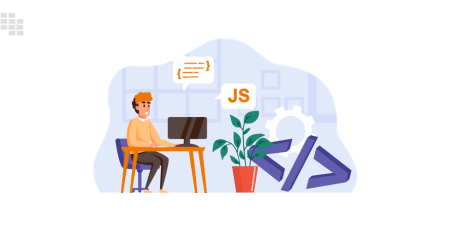
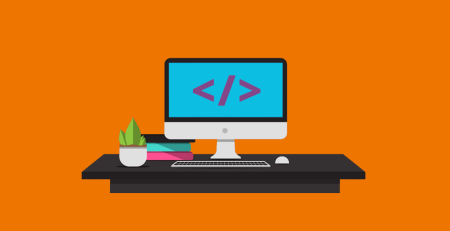
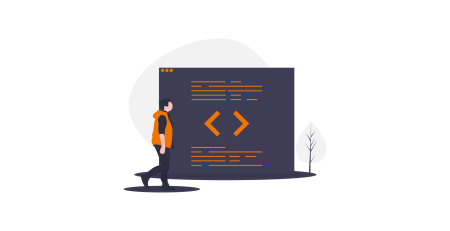


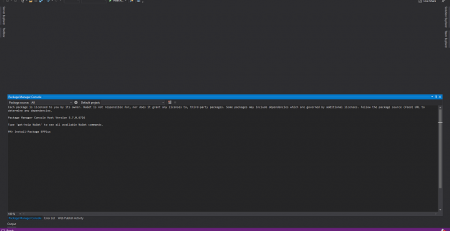

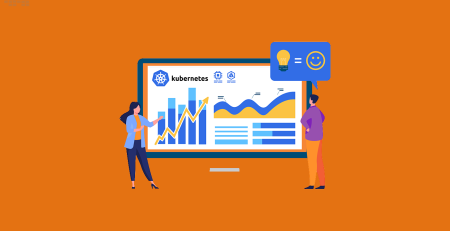

Leave a Reply